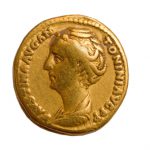
Gold is mined almost all over the entire world, and many places are famous for their gold deposits. Who can forget the California gold rushes, or the massive gold nuggets in Australia, or the birth of the gold standard near ancient Europe? But in the grand scheme of things, it’s all scraps compared to Witwatersrand Basin.
Located in South Africa near Johannesburg, the Witwatersrand (Afrikaans for “white water ridge”) Basin is a curious geological formation. The area earns its “basin” label from the average elevation of the much taller mountain plateaus that surround it. Just below the surface are the largest gold deposits in the entire world.
How large? Since its discovery in 1886, the Witwatersrand basin has produced more than 1.5 billion troy ounces. That’s almost half of all the gold ever mined in the history of the world. The gold has formed in thin veins through the crust. Some mines in the area go as deep as 4,000 meters to reach it. Because of the basin’s vast gold bounty, African currency – the Rand – is named after it.
Of course, the Witwatersrand Basin is not as rich as it once was after more than a century of mining. Many of the old mines have been cleaned out. In spite of this, the basin still accounts for a large portion of the world’s gold output.











